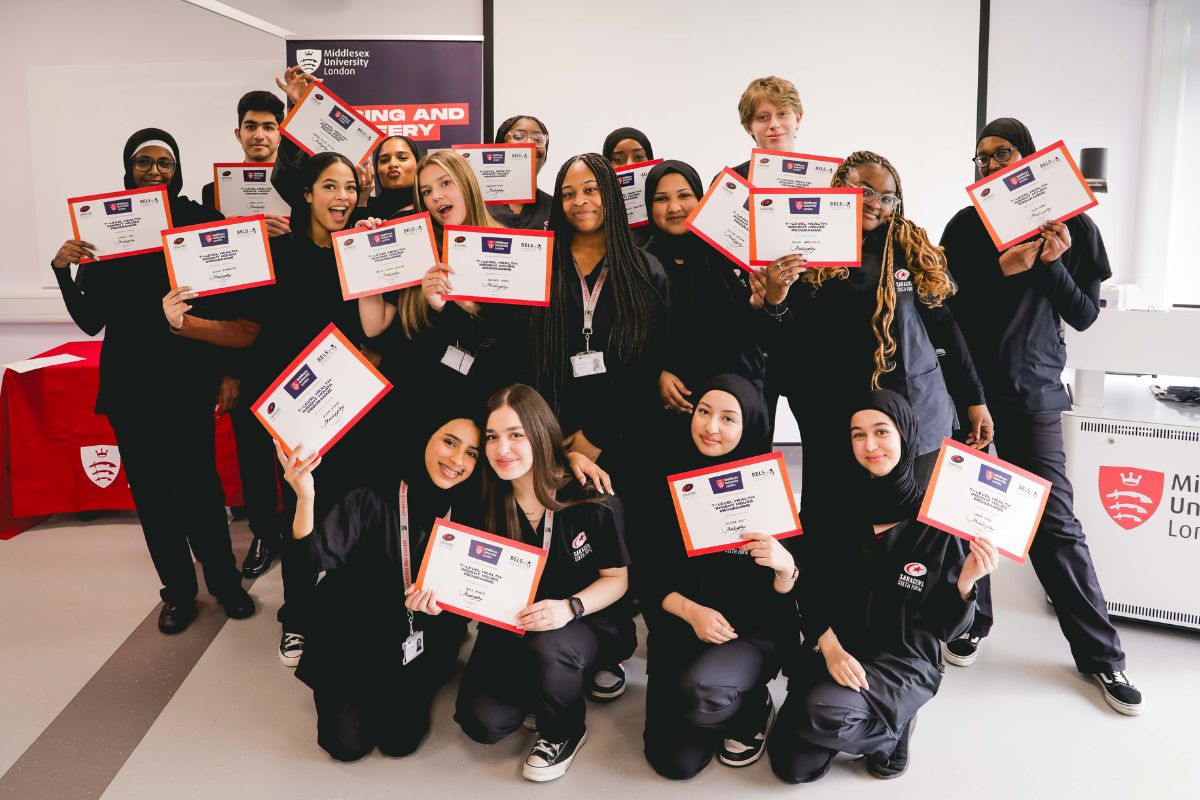FORMER HIGHER EDUCATION MINISTER SLAMS OXBRIDGE FOR LACK OF PROGRESS AND CALLS FOR REFORM

Former Higher Education Minister David Lammy MP brands Oxbridge colleges “fiefdoms of entrenched privilege” and “the last bastion of the old school tie” as data released under the Freedom of Information Act reveals a shocking lack of progress on widening participation and access to Oxbridge:
-
The proportion of offers that the universities of Oxford and Cambridge made to applicants from the top two social classes rose from 79% in 2010 to 82% and 81% respectively in 2015 (the proportion was on average, 77.5% for Oxford and 76.9% for Cambridge between 2004-09)
-
University of Cambridge made more offers to applicants from four of the Home Counties than the whole of the North of England from 2010-2015
-
University of Oxford initially refused to publish data showing race and ethnicity of applicants and offers made by each college
-
Oxbridge draws half of its students from the South East and London, with around 11% from the Midlands and 15% from the North
-
Each year 2010-2015 13 Oxford colleges did not make a single offer to a Black A Level applicant
-
Only 3 Oxford colleges made an offer to a black A Level applicant every year
-
Each year in the period 2010-2015 a quarter (on average) of Cambridge colleges failed to make any offers at all to black British applicants
Today (20th October) former Higher Education Minister David Lammy MP publishes data secured under the Freedom of Information Act showing that the universities of Oxford and Cambridge are hugely unrepresentative of the country and take the overwhelming majority of their students from a small, privileged minority in the South of England.
Lammy is calling for reforms to Oxbridge’s admissions including a centralised admissions process, foundation years, more weight to be given to an applicant’s class and local authority rank and for the universities to directly contact talented students from under-represented areas and backgrounds to encourage them to apply.
David Lammy said:
“Overall, the picture painted by this data is of two institutions that overwhelmingly draw their students from a privileged minority in the South of England and are complacent at best about taking steps to widen participation and access. If anything things have got worse since the first time I requested this data”.
Regional disparities
-
University of Cambridge made more offers (2953) to applicants from four of the Home Counties (Hertfordshire, Surrey, Kent, Oxfordshire) than the whole of the North of England (2619) from 2010-2015
-
University of Oxford made more offers (2812) to applicants from five of the Home Counties (Surrey, Hertfordshire, Oxfordshire, Kent, Buckinghamshire ) than the whole of the North of England (2619) from 2010-2015
-
University of Cambridge made 4817 offers (27.3% of total offers) to applicants from the top eight local authority areas (Hertfordshire, Kent, Surrey, Oxfordshire, Hampshire, Buckinghamshire, Essex, Cambridgeshire) , whereas applicants from the eight local authority areas with the fewest offers (Sandwell, Rochdale, Knowsley, Blaenau Gwent, Halton, Merthyr Tydfil, Torfaen and Neath Port Talbot) received just 8 offers (0.0005% of total offers)
-
University of Oxford made 4124 offers (24.7% of the total offers) to applicants from eight local authority areas (Surrey, Hampshire, Hertfordshire, Oxfordshire, Kent, Buckinghamshire, Cambridgeshire, Richmond upon Thames), whereas applicants from the eight local authority areas with the fewest offers (Isle of Anglesey, Middlesbrough, Merthy Tydfil, Blaenau Gwent, Gwynedd, Torfaen, Redcar and Cleveland, Salford) received just 31 offers (0.001% of the total)
-
48% of Oxford offers went to applicants from London and the South East; compared to 11% from the Midlands, 15% from the North West, North East, Yorkshire and the Humber and 3% from Wales
-
48% of Cambridge offers went to applicants from London and the South East; compared to 12% from the Midlands, 17% from the North West, North East, Yorkshire and the Humber and 2% from Wales
David Lammy said:
“The Oxbridge geographic and regional divide is shocking. At a time when London and the South East are more dominant than at any other point in our history, Oxbridge are failing to live up to their responsibilities as national universities.
“Oxbridge takes over £800 million a year from the taxpayer – paid for by people in every city, town and village. Whole swathes of the country – especially our seaside towns and the “left behind” former industrial heartlands across the North and the Midlands are basically invisible.”
Socio-economic background
-
The proportion of offers that the universities of Oxford and Cambridge made to applicants from the top two social classes rose from 79% in 2010 to 82% (Oxford) and 81% (Cambridge) in 2015
-
The proportion of entrants from the top two social classes was, on average, 77.5% for Oxford and 76.9% for Cambridge between 2004-09
-
Over half (18 out of 32) of Oxford undergraduate colleges made more than 80% of total offers to applicants from the top two social classes between 2010-2015, including the colleges that educated David Cameron (Brasenose), Boris Johnson (Balliol), Philip Hammond (University) and Jeremy Hunt (Magdalen)
-
Whilst two Oxford colleges (Wadham and Mansfield) offer half of total places to applicants from state Comprehensives and Sixth Forms, over 80% (26 out of 32) Oxford colleges offer at least half of its total places to applicants from Independent and Grammar schools.
David Lammy said:
“This data clearly shows that a privileged background is still the key to getting through the Oxbridge admissions process. I am appalled to find that Oxbridge are actually moving backwards when it comes to socio-economic background – over 81% of offers were made to the sons and daughters of people in the two top socio-economic classes in 2015, compared to 79% in 2015 and 77% between 2004 and 2009.
“573 students on free school meals and 3,000 students from disadvantaged backgrounds get 3 A’s or better at A Level every year, yet talented working class kids are missing out. It is frankly a scandal that Oxbridge are able to get away with this whilst taking £800 million from the taxpayer each year. If they can’t address this then there is no reason why taxpayers from every city, town and village in the country should continue to foot the bill.”
Race
-
University of Oxford initially refused to publish data on race and ethnicity, arguing that because the numbers involved are so small disclosing data on ethnic background “would enable the ethnicity of existing and recent students to be inferred”.
-
Each year 2010-2015, on average, 13 Oxford colleges did not make a single offer to a Black A Level applicant
-
Only 3 Oxford colleges made an offer to a black A Level applicant every year
-
Magdalen College made 2 offers to black A Level applicants between 2010-2015, for Oriel it was 1, for St Edmund Hall it was 2
-
University of Cambridge made 1% of offers to Black students 2010-2015.
-
Each year in the period 2010-2015 a quarter (on average) of Cambridge colleges failed to make any offers at all to black British applicants
-
Only a quarter of colleges made offers to Black applicants in every year between 2010 and 2015.
-
Less than 1% of Cambridge offers went to Pakistani applicants
-
In 2015 half of Cambridge colleges (14 out of 29) did not make a single offer to a Pakistani applicant
David Lammy said:
“I have been pressuring the University of Oxford to publish this data for over a year and they have only begrudgingly decided to partially publish it now. Whilst I am pleased that Oxford has backed down to avoid further embarrassment, I am disappointed that the University has combined all Black people together into one group – why should they be the only institution that doesn’t break down data properly when you need granularity to understand different ethnic groups?
The Government has set the tone on transparency and openness in the recent racial disparity audit, yet Oxford have been extraordinarily defensive and sent out a terrible message to ethnic minority communities, especially as the University authorities admitted that the numbers of ethnic minority students at each college were so small in denying my original requests.
“There are almost 400 Black students getting 3 A’s at A Level or better every year. Difficult questions have to be asked, including whether there is systematic bias inherent in the Oxbridge admissions process that is working against talented young people from ethnic minority backgrounds”.
Reforms David Lammy is calling for:
-
Centralised admissions process to address the shortcomings of a diffuse, highly subjective collegiate system that is run and overseen by academics in individual colleges.
-
Foundation year programmes similar to the model successfully piloted by Lady Margaret Hall to target and support talented young people from under-represented areas or sections of society and disadvantaged backgrounds.
-
Oxbridge to directly contact talented students from disadvantaged backgrounds and under-represented areas and groups. For example by writing to every student who gets 3 A’s in their A-Levels to encourage them to defer their place (if they have one) elsewhere to apply to Oxbridge, and by writing to straight A students following GCSE and AS Level results days to encourage students to apply to Oxbridge and attend Open Days.
-
Oxbridge to follow the lead of Ivy League colleges in the United States by giving weight to an applicant’s class rank and local authority rank to recognise the achievements of applicants from under-performing schools and areas with lower participation in higher education.
David Lammy said:
“Whilst some individual colleges and tutors are taking steps to improve access, in reality many Oxbridge colleges are still fiefdoms of entrenched privilege, the last bastions of the old school tie, with admission dependent on highly subjective interviews and the whims of academics recruiting in their own image. It is clear that many colleges will not change left to their own devices, so it is time to move away from an autonomous collegiate system that prevents any real progress and centralise the admissions process.
An Oxbridge degree is still the golden ticket in our society and a gateway to the top jobs so the Government has a responsibility to hold Oxbridge to account. For far too long Oxbridge have been long on rhetoric when it comes to improving access and widening participation but very short indeed on action. A complacent approach that simply blames the school system is not good enough – we know that the talent is out there, and Oxbridge have simply got to do a better job of ensuring that they find the most talented students, irrespective of their background.
Oxbridge are spending £10 million a year on access, but it is clearly not working. I am calling for the roll out of foundation year programmes by Oxbridge colleges following the successful pilot of a foundation year at Lady Margaret Hall. Having met the first cohort of students and seen first-hand how an Oxbridge college can successfully reach disadvantaged and under-represented students, there is absolutely no reason why every college should not be launching a foundation year.
Oxbridge should be making more of an effort to directly communicate with talented students from disadvantaged or under-represented areas. They should be writing to straight A students at 16, 17 and 18 to persuade them to apply or attend an open day, as is customary for Ivy League institutions.”
Shadow Secretary of State for Education Angela Rayner said:
“This is the latest damning evidence on the Government’s failure to widen access to our most selective universities. The proportion of comprehensive school pupils getting in to top universities under the Tories is lower than when Labour left office, and this data shows that the problem is especially serious at Oxford and Cambridge. Ministers claim their system is working but these figures show that it isn’t.
“Labour’s plans for free lifelong education and restoring maintenance grants for the most disadvantaged students would widen access and ensure that higher education was available for the many, not the few.”
Socio-economic background is NSSEC (National Statistics Socio-economic Classification), used in the UK census. Class 1 is “Higher managerial and professional occupations” and Class 2 is “Lower managerial and professional occupations”. At the 2011 Census 10% of UK residents were in Class 1 and 21% were in Class 2.
On average, each year 573 children on free school meals got 3 A’s or better between 2010-2015 according to Department for Education statistics
On average, each year 3,030 children from the three most deprived deciles according to Income Deprivation Affecting Children Index got 3 A’s or better between 2010-2015 according to Department for Education statistics
For more information on the Lady Margaret Hall foundation year: http://www.lmh.ox.ac.uk/prospective-students/foundation-year/lmh-foundation-year-students/what-foundation-year
Oxbridge receive £385 million from the taxpayer in the form of funding body grants, and a further £422 million from the taxpayer in the form of research grants according to the House of Commons Library












Responses